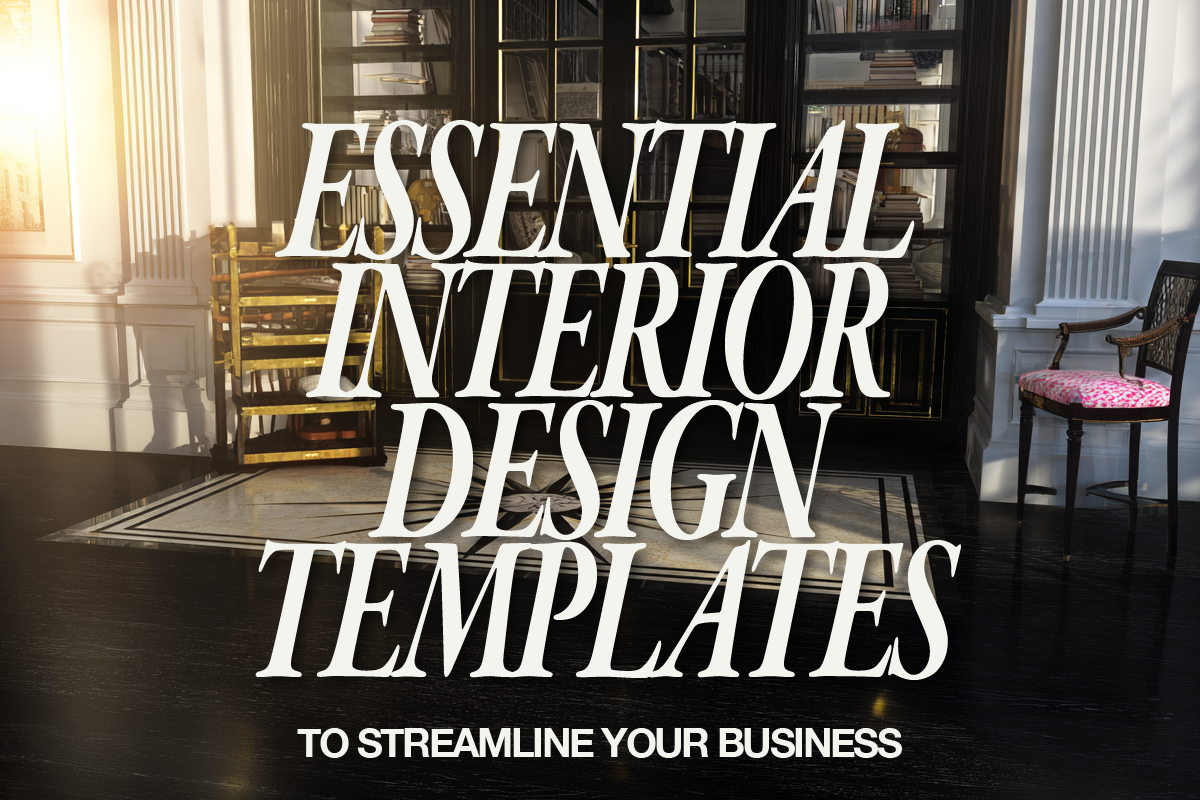
Essential Interior Design Templates to Streamline Your Business
by Penelope Stephens
·
Interior design wasn’t meant to be about admin and client docs… it’s meant to be creative.
This week, I was chatting with an interior designer over coffee.
She told me about a recent project where she spent two full days pulling together proposals, sending back-and-forth emails, and trying to format an invoice.
By the time she actually got to the design work, she was exhausted. Then she laughed and said, “I didn’t start my business to feel like a secretary instead of a designer.”
And she’s right. Designers and creatives of all kinds don’t launch their careers dreaming about chasing invoices or retyping proposals. Ew. No. We want to create.
But that’s the reality - those tasks come with the job, especially when you freelance or own your own business. And if you don’t have a system, they’ll take over.
That’s where interior design templates come in.
They cut out the repetitive admin and give you ready-to-use documents that look polished, save you time, and keep everything running smoothly.
The Templates Every Interior Designer Needs
Portfolio Template
Your portfolio is your proof of concept. A portfolio template helps you showcase past projects in a way that feels curated and professional; whether you’re emailing it, presenting in person, or sharing online.
Proposal Template
Your proposal is often the first real document a client sees. A strong interior design proposal template doesn’t just pitch your vision, it also works as an interior design quotation template, breaking down costs clearly from furniture to finishes, labor to logistics. It keeps everything transparent, avoids confusion later, and helps clients feel confident moving forward.
Invoice Template
Getting paid shouldn’t be stressful. With a polished interior design invoice template, you can send branded, professional invoices that make payment straightforward for clients and keep your cash flow steady.
Client Agreement
Boundaries make good business. A client agreement template lays out scope, responsibilities, timelines, and revisions so everyone knows what’s included (and what’s not). It protects your time, your work, and your client relationships.
Daily Planner
Creative work still needs structure. A daily planner template helps you juggle site visits, supplier calls, and client meetings without dropping the ball. It keeps your week balanced and your projects moving.
Client Portal
Emails get lost, files get buried, and feedback gets scattered. A client portal template gives your clients one central place to see updates, timelines, and deliverables. It cuts down the back-and-forth and makes your process feel seamless.
Why This Matters
Templates aren’t about making design boring, they’re about giving you back the time and headspace to focus on the creative work that matters. Instead of reinventing the wheel with every client, you’ve got systems that basically run themselves in the background.
At the end of the day, your clients hired you to design spaces, not to spend hours making and formatting documents.
Because guess what? - making documents isn’t a billable line item.